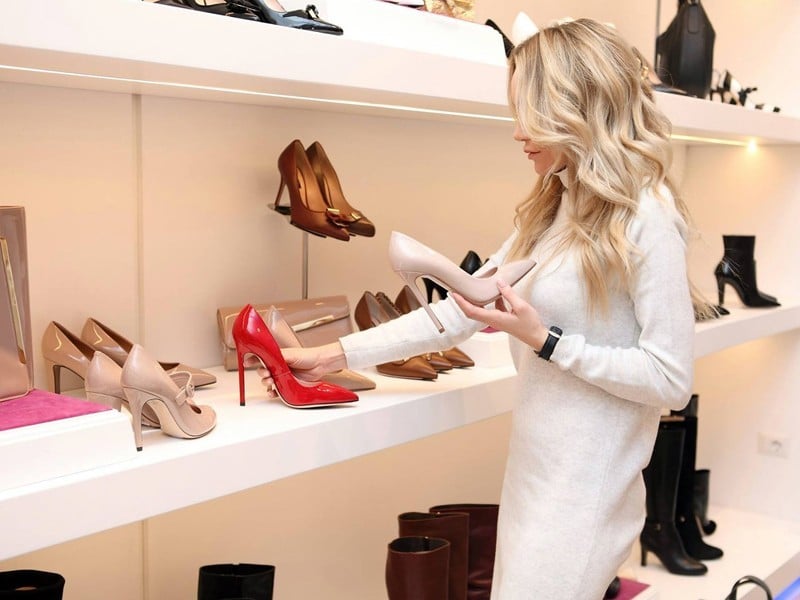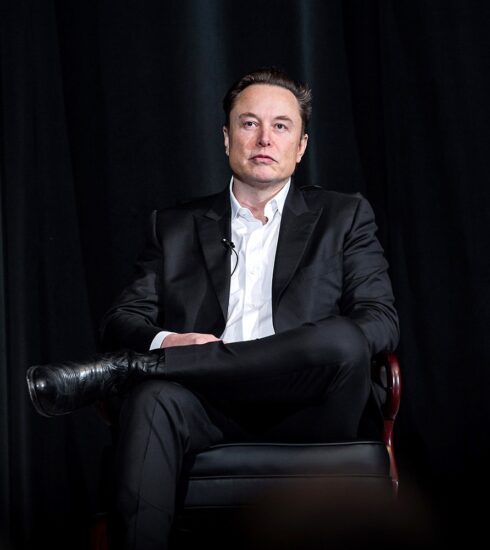Fast Fashion: How Slavery Fuels Your Style
By Melissa Jane Kronfeld, Ali Brown & Jackie O. Herb
Walking past a Zara storefront the bright red SALE sign catches your eye. Running your fingertips along the detailed embellishments on the white silk shirt you spotted window shopping, you cannot help but notice the precision and detail with which the delicate lace and metallic chiffon fabric overlays have been sewn together. But the best part… this jaw-dropping, red-carpet worthy top is just $12.99, on sale from its original price of $29.99.
OMG. How can it be so cheap? you ask yourself as you make your way through the mountainous array of dresses, sweaters, jackets, shorts, blazers, jumpsuits, jewelry, hats, bags, and shoes filling rack upon rack, and all so reasonably prices, discounted or even better, FINAL SALE! that it is impossible not to grab one of every item, in every color, even if it’s not your size.
What does it matter? you think. With prices this good I can wear it once and throw it away. After all it’s the same price as a cup of coffee!
But stitched away in the seams of your cheap clothes from retailers like Old Navy, Zara and countless other small, medium and even global conglomerate brands you will likely find millions of slaves who fuel the factories producing the ‘fast fashion’ driving the truncated toggery trends that define the Millennial generation.
Slavery is embedded in everything we wear. Justin Dillon, founder of Made In A Free World, tells us, “I have to go to work every day and combat slavery while also contributing to it.
“But if we can make it normal,” he says, “and I dare say kind of boring, to fix this problem then we can fix it to scale.”
Justin, who recently published a tell-all tome called A Selfish Plan To Change The World, believes that by actively recruiting companies and engaging producers we can end slavery in the fashion industry.
“We created a software called FRDM,” Justin tells MiLLENNiAL, “which allows us to find risk for slavery in supply chains and identify which supplier they need to work with to remediate those challenges and really let the market place develop this for itself.
“We help empower companies to be able to find these risks and deal with them inside of their own policies,” he adds. “And we find that that is a much more successful way to be a helper than an authority.”
Justin is proving that the long-term benefits of transparent supply chains, investing in employee education, and supporting workplaces free of slavery outweigh the short-term cost that slavery supposes to provide those who use it.
Fashion’s Fast & Furious
The speed at which style moves today has created a ‘Fast Fashion’ industry where trailblazing trends flicker out almost as quickly as they set the catwalks on fire. But the result of these frantic fads is the rise of an ever-expansive production process, mass manufacturing clothing with two singular objectives: to get garments to consumer’s as quickly and inexpensively as possible.
And they are succeeding. Annual production reached 100 billion articles of clothing in 2014, marking a rate which has more than doubled since 2000. That’s because consumers are responding in kind – purchasing 60 percent more clothing items each year, but keeping them only half as long as before. Seasonal collections have given way to ‘micro seasons’, with new shipments of slave-spun styles arriving at stores as often as twice a week.
https://vimeo.com/145563438
Large brands such as Victoria Secret, Nike, The Gap, and even Disney are complicit in underwriting the rise of sweatshop labor around the world, which leaves overworked employees struggling through long hours in unsanitary and unsafe conditions with little to no compensation, capacity for advancement and in some cases, freedom to leave the factory.
Earning less than a few dollars a day for a 14 to 16 hour shift, worker’s wages are often garnished by the factory owner for ‘renting’ the sowing machine they are compelled to use or the mat on the floor beneath it, where some sweatshop laborers will eventually sleep, eat, live and quite possible die from exhaustion, malnutrition, physical abuse or worse.
It is not just low cost clothing such as Forever 21, Joe Fresh, and H&M that are guilty of contributing to the rise of Fast Fashion, but so too are high-fashion houses like Prada, Fendi and Chanel – three of the least transparent haute couture conglomerates in terms of disclosing supply chain specifics, according to a report published by Fashion Revolution.
And when companies lack transparency it is impossible for consumers, let alone stockholders, to be conscious of, and fight against, fashion’s industry of injustice. Organizations like Fashion Revolution hope to change this by allowing companies – through their data sharing project the Fashion Transparency Index – an opportunity to provide honest, real-time information about their supply chains for consumers to consider and use when making their purchasing decisions. This year they worked alongside 40 fashion companies, next year they hope to reach over 100.
Malice in Mexico
It is far easier to consider slavery as something that happens ‘over there’, in a factory far away, filled with uneducated and impoverished women and girls who choose to work there, rather than beg in the streets or face being beaten in a brothel. But fashion’s fast producing factories are not always so far away, and the choice to work (or remain working) in one, is not always so freely made.
Just eight years ago, police raided a clandestine factory in Mexico City that was producing clothing clasps and shopping bags for a company whose identity has still never been revealed. The authorities freed 107 enslaved workers, ranging in age from teenagers to seniors, from a sweatshop disguised as a drug rehabilitation center. The workers had been tricked into entering the facility, having been promised free drug and alcohol treatment.
Slaves to fashion, the workers endured 14 hour shifts with just one thirty-minute break. They were fed just enough rotten vegetables and chicken feet once a day in order to keep them alive. All were regularly beaten and sexually assaulted. None were ever paid. When discovered, most were malnourished – some had broken bones.
This story is not as unique as one may think. And it has and continues to happen even on a much grander scale, in factories featuring several hundred workers enduring the same conditions and treatment.
The Day Fashion Died
In 2013, 1,129 people were killed when a poorly built garment factory collapsed in Rana Plaza, Bangladesh. Among some of factory’s more notable clients included JCPenny’s, The Children’s Place and Walmart. The apartment tenants, shops owners, bankers and the businesses that used the building recognized the lack of structural integrity when they were expelled from the dilapidated edifice for safety reasons and to allow time for repairs to be made. However, the garment workers were expected to continue to labor in the defective construction. And as a result, their lives came to a tragic end.
Following the avoidable mass atrocity, it was revealed that the Bangladeshi workers were not only expected to risk their lives in the dangerous factory each and every day, but they were paid the equivalent of just $40 American dollars per month, an unlivable wage for any individual, let alone couple, family or single parent working in the cramped, crowded and cringe-inducing factory floor in a nation as poor and undeveloped as many in Southeast Asia.
Out Forgotten Cotton
Fashion supply chains are long, complicated and increasingly transnational. And they don’t start in the factories of South America or Southeast Asia. Long before the range of pre-portioned fabrics are sewn into the styles we love to forget, the cotton that they consist of is picked in the fields of Africa, the Middle East, and Asia. Not unlike the founding farms of America’s not so distant past, cotton slavery is as abundant as the clothes we wear today which – more often than not – bear the mark of bondage along beaded trims and layered lace.
According to UNICEF, children as young as 10 are forced out of school and into the cruel cotton trade across the world. Because, with smaller hands, children are less likely to damage the plant when picking. The government of Uzbekistan is one of the worst offenders, forcing their own citizens to uproot their lives, leave their jobs or schooling to pick cotton in the excruciating heat of the Uzbek fields during harvesting season.
Patricia Jurewicz, Founder and Director of the Responsible Sourcing Network, has pressured Uzbekistan to end the exploitation of their youngest of workers. And because of their efforts, over 250 branding companies refuse to purchase Uzbeck cotton.
“Most consumers have no idea and even the brands are very ignorant or unknowing of where materials originate,” Patricia tells MiLLENNiAL. “When we first approached brands [in 2007] and asked if they knew where their cotton originated, almost all of them said no.”
In neighboring Kazakhstan, UNICEF found widespread child labor in the cotton trade. In one case, as many as 11 schools excused 700 students in order to reap the annual harvest. Ultimately, this slave tainted cotton finds its way onto the racks of our stores and then the shelves in our closets.
“Because cotton is traded in a global commodity market – and the margins are very small – [companies and consumers] haven’t been asking the question about where their cotton comes from and what conditions its being harvested in,” Patricia says.
“What we need is more transparency.”
America’s Abhorrent Apparel
It can be convenient to believe labor trafficking within the fashion industry excludes the United States; however, slavery within the labor sector is also prevalent in the ‘land of the free.’ Traffickers recruit the vulnerable by promising a better life, a well-paying job and a path out of poverty for themselves and their family.
Full of desperate hope for a brighter future, many well-meaning immigrants are unknowingly trafficked to, or sometimes arrive on their own accord in, America and quickly fall victim to extreme forms of labor exploitation. Some owe a debt of passage to the trafficker who shipped them like cargo into the country; others are threatened with violence or have identity papers seized. Not knowing the language, the law, nor the lay of the land – many find themselves force into fashion’s newest trend – a life of hard labor in hidden sweat shops dotting the concrete shores of Manhattan’s island paradise.
The widely-acclaimed, globally recognized, high-end designer Alexander Wang, faced a $50 million lawsuit in 2012 for allegedly overworking and mistreating employees in a New York City sweatshop. One of the 30 workers who sued Wang was a 56-year-old woman named Wenyu Lu, who claimed she worked for over 25 hours without a break, resulting in her hospitalization. Fifth Avenue’s finest – like Barneys and Bergdorf Goodman – continue to sell Alexander Wang and celebrities eagerly don his clothes as a badge of preeminent pride.
The Future of Fashion’s Finest
For an industry that sells glamour, Fast Fashion is its dark underbelly that embodies the worst forms of human exploitation. We now value our clothes as much as traffickers value the lives of their slave laborers – and that has to change. Because if the recent past is any measure of the near future, then Fast Fashion is only going to get faster and faster.
The Fast Fashion industry has not only changed the way we dress, but directly contributes to the exploitation of worker’s around the world, particularly in those places where employment options are as limited as the wages they reap. And with every bargain basement, super discounted, ultimate final sale, the value that we place on human life decreases – whether or not we choose to recognize the effect our purchasing power is having.
But there are leaders in the fight working hard to put the brakes on the bedlam of this costume crisis.
One of the leading luminaries in the slave-free fashion field is David Dietz, Founder & CEO of Modavanti. As an online retailer, David promotes sustainable fashion by working with brands that are entirely devoted to eco-friendly and ethically made standards.
“Part of Modavanti’s commitment is that all our brands are slavery free,” David tells MiLLENNiAL. “Not only do our brands practice ethical labor, but many of them support women’s cooperatives, pay more than the living wage, promote artisanship and donate proceeds to anti-slavery NGOs.”
David believes it is critical to promote ethically produced apparel because only three percent of clothing is manufactured in the U.S. today, making it easy for companies to mask the slavery embedded in their supply chains by sourcing materials and labor in a range of different countries across the world.
Katie Ford, the CEO of Ford Models and founder of Freedom For All, has long known that the future of fashion is free. As a matriarch of the modern abolitionist movement, Katie prides herself on running women-led organizations and corporations that embody the spirit of freedom at every level of operation. As a pioneer of the modeling industry, Katie is acutely aware of how vulnerable young people are easily preyed upon or taken advantage of, particularly when they travel to a new country in pursuit of their dreams.
Bearing one of the world’s most recognizable names in fashion, Katie tells us that it is not uncommon for traffickers to pretend they work with Ford Models in order to recruit and exploit men and women for money. To combat these vulnerabilities, Katie and her team launched an awareness campaign to highlight the dangers of traveling abroad for work and the signs of a fraudulent deal.
Katie knows that trafficking does not just effect the face of modeling, but the factories as well. However, Katie is more positive than ever.
“Millennials give me hope that they can end slavery,” she tells us, “because they integrate ethics into their purchases. Many of them react instantly to stories of abuse in supply chains. Many investment funds in which millennials invest have social and financial returns.”
From Callous to Conscious Consumer
Reacting and responding to the ethical practices – or lack thereof – of producers is what makes Millennials the most conscious consumers in the modern market. Practicing ‘conscious consumerism’ means demanding companies produce responsibly and fairly by voicing concerns and wielding purchasing power by shopping for products aligned with the values of transparency and freedom.
Nathanial Erb, founder of Dashing Emancipation tells us, “we look at things like fair trade products as something that is unique and socially good. Social alternatives will be looked at as a niche thing when they should be normalized.
“So not only do we have to make it financially beneficial for companies to invest in fairly made products,” he adds, “but by making the marketing of slave-free products the norm rather than something special is also a step in the right direction.”
Fighting for change should come from consumers and producers, but also must come from the government. Slavery is illegal in every country in the world. The problem is enforcing the law and making it stronger. Consumers can bring pressure to bear on companies to ensure workers’ rights, but it is the responsibility of the government to ensure justice when those rights are abrogated.
Amanda Cole, who serves as Social Impact Strategist at Kenneth Cole Productions, tells MiLLENNiAL that we must ensure our elected officials are aware of the problem, and committed to fighting modern day slavery and human trafficking at every level.
“Governments can take regulatory action,” she points out. “Recent measures include the California Transparency in Supply Chain Act of 2010, which is intended to ensure consumers are provided with information about efforts companies have taken to prevent and eradicate human trafficking and slavery from their supply chain.”
Trailblazing the Trend of Freedom
Walk into any crowded coffee shop in Manhattan and look around at the customers. There’s that heavily bearded and ironically tattooed guy rocking a grunge-meets-goth look; the preppy, twenty-something in public relations conspicuously clad in designer everything; and the woman at the counter, paying for her iced, non-dairy, double shot, no foam, slim caramel something-atto saddled by an excessive number of layers top-to-bottom because it is always too cold in her office.
What do these three distinctly different strangers still have in common? Each wears an article of clothing that has been cut, clasped, stitched or sewn by a modern-day slave.
So, stop and consider the next time your eyes settle on that SUPER SALE sign if the price that appears on the tag considers the cost of the labor that made it; if something so cheap could possibly reflect the human effort invested in its creation. And then ask yourself this one simple, question: if all it took was to cross the street and pay one dollar more for the exact same item, knowing that it was entirely and completely slave-free, would you make the effort?
Because conscious consumerism begins with us, the consumer. And that leaves just one question remaining: what does your conscious tell you to do?
Interested in learning more about Fast Fashion? Check out the work being done Made In A Free World, Fashion Revolution and Transparentem or support sustainable retailers on the cutting edge of slave free clothing like Patagonia, Everlane and Raven + Lily or through online platforms like Modavanti. Shop small and directly support freedom through fashion therapy and employment programs, like FAIR Girls, the Batey Rehab Project or Nomi Network. Download mobile app Good On You and learn more about the environmental and labor practices of your favorite brands. Learn more about what your favorite fashion house is doing to end supply chain slavery by reading the Fashion Transparency Index and then write a letter to your favorite brand requesting they join the platform. Watch the documentary The True Cost or Walmart: The High Cost of Low Price or The Machinists. Then read Elizabeth Cline’s book Overdressed: The Shockingly High Cost of Cheap Fashion, Lucy Seigle’s To Die For: Is Fashion Wearing Out the World?, Andrew Brooks’ Clothing Poverty: The Hidden World of Fast Fashion and Second-hand Clothes and Wear No Evil: How to Change the World with Your Wardrobe by Greta Eagan.
This is the firth article in a 10-part series highlighting modern slavery and trafficking in the Twenty-First Century. Read Part One here, Part Two here, Part Three here or Part Four here. Check back with Millennial Magazine over the coming months to learn more about this critical issue and how you can join the movement to #EndSlaveryNow!









